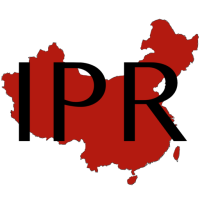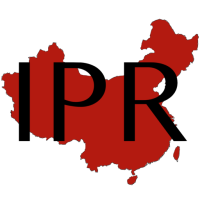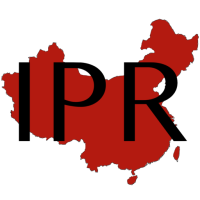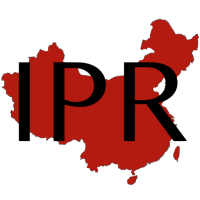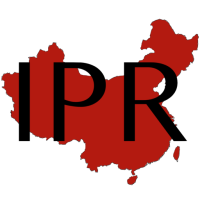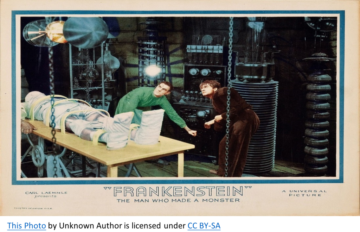
This is one of a series of blogs reviewing recent books and articles on IP and China.
The books reviewed here are Petros C. Mavroidis and André Sapir, China and the WTO: Why Multilateralism Still Matters (Princeton University Press, 2021. x + 242 pages. Paperback, $27.95) (“China and the WTO”) and Angela Hu Yue Zhang, Chinese Antitrust Exceptionalism (Oxford University Press 2021, xiv + 252 pages. Paperback, $39.95) (“Antitrust Exceptionalism”). I also discuss Henry Gao’s recent article in the Harvard Law Journal, “WTO Reform and China: Defining or Defiling the Multilateral Trading System?” (2021) (“WTO Reform”), which provides a third perspective.
Both of the books consider trade and competition law aspects of the U.S.-China trade dispute. In this context, they discuss the treatment of state-owned enterprises (“SOE’s”) and entities acting on behalf of the state under international trading and domestic competition law rules. They both also discuss IP-specific issues, particularly forced technology transfer (FTT) by or for the state and the control of abusive technology licensing practices, including the licensing of standards essential patents and China’s discriminatory Administration of Technology Import/Export Regulations (“TIER”), which has since been amended. The books and article are part of several academic and popular discourses on the disruptive and unpredictable policy agenda of the Trump administration, which also provide cautionary roadmaps for future engagement – or confrontation – with China.
The authors of the two volumes principally differ on the foundational issue of whether resolution of the issues that they have identified can be based on law or politics. China and the WTO makes the case for the long-term renewal of a rules-based order to resolve bilateral trade disputes, and advocates for a renewed multilateralism and the amending of WTO rules. In the authors’ view, the Trump administration’s “disruption” was preceded by the larger disruption of China’s statist approach to its economy. Nonetheless, in the authors’ view a “liberal understanding” regarding the role of free markets was both implicit in the creation of the General Agreement on Tariffs and Trade (GATT) and subsequently the WTO, even if the final texts did not fully capture those understandings. While Antitrust Exceptionalism hardly considers WTO disciplines, China and the WTO looks to competition law and trade doctrines to ensure national treatment in competition law enforcement and adherence of SOE’s to WTO disciplines (p. 250). This “game”, in the authors’ views, should be played in Geneva, at the WTO headquarters. A further exploration of the future role for the WTO was presented by Prof. Marvroidis at a Berkeley Law program on Tech, Trade and China on April 21, 2021, at approximately 36:00 of the recording, where he argued for the “completion” of the necessary legal texts as the “only adequate means to address the issue[s].”
Antitrust Exceptionalism, by contrast, addresses an international competition law regime that is less encumbered by international agreements and has often fallen outside of WTO disciplines. For example, China’s modern Antimonopoly Law (AML) regime largely post-dates China’s WTO accession by about six years. The author convincingly explains the recent and rapid rise of Chinese antitrust regulation by analyzing the various political incentives that have contributed to the important political role that the AML exercises rather than the need to rebuild international institutions. Among those political responses are the path-dependent nature of AML enforcers. The author also explores the antitrust challenges that Chinese firms experience overseas, which in her view are deeply rooted in China’s distinct political economy, particularly its model of governance, which is state-led but nonetheless facilitates the rise of local market actors to accomplish national goals.
The differences in perspectives between the two authors may be attributable as much to their principal focus as the extent to which they seek to understand the extent to which decisions are politically motivated. The WTO was intended to establish a rules-based trading system for adjudication of a range of disputes, including the possibility of competition law disputes. Due to the incorporation of TRIPS disciplines regarding intellectual property in the WTO, it is inevitable that a WTO-schooled author would seek to determine whether these disciplines could address such US complaints as forced technology transfer or IP theft. By contrast, some competition law practitioners may view the expansion of the WTO into competition law disciplines with askance and might wish to jealously safeguard their regulatory autonomy. Moreover, they may also view intellectual property – wrongly in my view – as rights that constrain their country’s national development, or are otherwise monopolistic in nature.
Antitrust Exceptionalism offers several useful and creative approaches for analyzing China’s Anti-Monopoly Law (AML) regime. One such construct is “bureaucratic entrepreneurship,” i.e., the manner in which Chinese AML agencies and regulators have expanded their influence through pursuit of high-profile cases. The author discusses several high-profile cases, such as the price-based antitrust investigation of Qualcomm by China’s National Development and Reform Commission, to demonstrate how these cases have enlarged the role of the investigating agencies and/or accelerated the career trajectory of its investigators. In a more recent article of July 28, 2021 that the author posted on SSRN, Agility over Stability: China’s Great Reversal in Regulation the Platform Economy, the author notes that China’s recent regulatory crackdown on its tech firms affords an additional opportunity to create a more innovative path that also serves other social and economic needs. This concept of “bureaucratic entrepreneurship,” which the author describes so well, is also evident in other sectors of the Chinese economy which the author does not consider, including, for example, in the current competition between the courts and agencies over China’s patent linkage regime.
Antitrust Exceptionalism looks extensively at China’s reactions to unilateral sanctions by the United States to analyze the trajectory of China’s antitrust regime in recent years. In the author’s view a “regulatory interdependence” has emerged “between the regulatory moves of the United States and those of China.” These tit-for-tat responses are cross-disciplinary: for example, the response to an export control or Office of Foreign Assets Control (OFAC) investment restriction by the United States might be an antitrust investigation. As one example, in Prof. Zhang’s view, the United States is aggressively claiming extraterritorial jurisdiction over Chinese technology companies and executives, and China is now emulating this practice by wielding its antitrust law to demonstrate its own extraterritorial regulatory capacity (p. 203).
Given its analytical approach, it is not surprising that Antitrust Exceptionalism frequently minimizes the significance of legal disciplines by extending the author’s political explanations of agency action into private behaviors. Prof. Zhang notes, for example, that the subjects of Chinese AML investigations do not bargain “in the shadow of the law” because the parties anticipate repeated future interactions. The law matters “not in the slightest” to these transactions. To her, this explains why most businesses under Chinese antitrust investigation prefer to accept their punishments, settle fines, and continue with their activities. More generally, the author notes that antitrust lawyers and academics “should also abandon the utopian ideal that antitrust law analysis is completely immune from political influence” (p. 242).
I agree that it is naïve to assume that China’s antitrust regime is immune from political influence, or that private actors look to a business-like resolution of disputes. I am also more likely to see AML decisions by China as politically motivated or otherwise linked to state planning and the building of a “socialist market economy.” For me the more intriguing question in such a highly politicized and planned environment, is to what extent the law nonetheless remains relevant, even if may not always be determinative. As someone who participated in many of the early discussions and conferences around the drafting and implementing of the AML, it is hard to doubt the interest of the regulators, judges, and others in understanding and adapting foreign antitrust concepts. Moreover, I rarely heard reference to either WTO or non-AML competition law regimes in those discussions (such as the TIER, pricing law, standardization law, etc.). Nonetheless, I believe that certain sectors of the Chinese economy may still be more bound to legal concepts that others. In intellectual property, for example, there is a high degree of legal interconnectedness between the Chinese and US IP systems including an extensive treaty framework that exists as compared to competition law. Neither the United States nor China can afford to fully abrogate commitments to national treatment of the other in protecting intellectual property. Notwithstanding efforts to decouple we still are hostage to the interconnectedness of our IP legal systems. For this reason, we may find a higher utility to traditional intellectual property law in a highly politicized environment than in other areas such as antitrust law.
It is not surprising, therefore, that the two books differ the most in their approaches to IP and technology transfer. Mavroidis and Sapirbelieve that there is in fact a rules-based order governing SOE’s, IP, FTT and a range of other bilateral trade controversies. While this order may often be skeletal, it can serve as a foundation to resolve a range of disputes. An example of a foundation for resolving this skeletal consensus is the limited but important provision in the TRIPS agreement governing licensing and competition law (Art. 40), as well as the WTO case that the United States filed against China involving national treatment and China’s technology licensing regime (DS542), which helped precipitate reform to China’s technology transfer regime.
Regarding IP protection, the authors look more broadly to literature regarding China’s civil enforcement regime and the “success rate” of foreign litigants. rather than trade-related rhetoric surrounding the importance of criminal enforcement in their advocacy of a rules-based order that remains relevant to China’s economic rise. China and the WTO is ultimately about the relevance of the overall WTO architecture when it encounters a state-controlled economy, including one alleged to be engaged in FTT. The authors take a similarly expansive view of the WTO regime and China’s commitments, noting that “in a way the entire TRIPS agreement is about counteracting forced transfer of technology” (p. 94). The authors believe the WTO remains relevant to some degree, despite many inadequacies, to the concerns raised in the trade war. Moreover, free trade agreements, such as the CPTPP, also offer promise in filling gaps.
The author of Antitrust Exceptionalism, on the other hand, is more inclined to find the United States to be a culpable actor. Certainly, the many random aggressive acts by the previous administration in the United States support that perspective. However, this does not mean that China lacks culpability in the trade war. As with many other Chinese scholars, she believes that the West is trying to “contain China” (p. 243) and that China is reacting to unfair acts with its own proportional responses. “One thing is clear,” she writes, “as the United States steps up its efforts to claim exterritorial jurisdiction over Chinese technology firms and executives, China will retaliate in kind by boosting its own extraterritorial regulatory capacity. The two sides are now locked in a dangerous battle of regulatory competition, leaving the occurrence of a disastrous outcome to chance” (p. 234). While retaliatory gestures hardly seem like the foundation of an equitable legal system, in her view, China nonetheless is “moving toward the law” while “the rest of the world seems to be moving away from it” (id.).
Henry Gao’s WTO Reform presents a more centrist view on the role of China’s adherence to international norms than either of these two books. Prof. Gao would likely agree with China and the WTO that “most of the problems concerning China are not new but reflect long-standing issues in China’s economic system which predate the WTO accession” (p. 1). He might even agree with that book’s authors that China’s development model is outside of WTO disciplines. He is also willing to concede that state-centered economic development is a major contributor to the disruption that has triggered so much of the “tit-for-tat” described in Antitrust Exceptionalism. “The most notorious example of the Chinese development model” for Prof. Gao is the Made in China 2025 Plan,” the plan that was the principle focus of the U.S.-China trade war (p. 17). Nonetheless, Prof. Gao might align himself with Antitrust Exceptionalism on Western motivations, as he observes that “Western powers, however, view China’s rapid development with suspicion, as they attribute China’s success mostly to its state-led development model, with state-owned enterprises, massive subsidies, and heavy government intervention playing a major role” (id.).
As the above discussion suggests, the role of industrial policy in China’s technological development is handled in disparate fashions by the authors reviewed here. Prof. Zhang finds in Antitrust Exceptionalism that foreign claims of industrial policy motivations in Chinese AML licensing investigations are “widely speculated.” The expression leaves one wondering whether the concerns are “speculative,” that is, they are opinions formed without adequate information, and differ widely among each other, or that they are somehow more credible because they are widely shared. She does advocate that they may be deeply rooted in national industrial policies such as Made in China 2025, or policies regarding standards essential patenting, or even pre-date WTO accession. By contrast, the authors of China and the WTO find direct state action in unfair trading activities, and believe that attribution of FTT to the state or SOEs may be possible under some of the existing WTO disciplines (pp. 98, 177, 187). They also believe, as I do, that WTO mechanisms have been underutilized and deserve serious reconsideration and/or renegotiation.
Mavroidis/Sapir and Gao address WTO disciplines around technology transfer, including the cases filed by the United States and the EU regarding the TIER. China and the WTO discusses the more comprehensive EU complaint against China, which included the TIER, the AML and other laws of June 2018 (DS549), but does not accord adequate weight to the earlier WTO complaint that the U.S. brought against China (DS542) (pp. 98-100). Antitrust Exceptionalism, by contrast, pays scant attention to IP-related issues involving competition policy at the WTO. These cases lend further support for the positions of China and the WTO regarding the viability of multilateral support in effecting change. The U.S. complaint involving Chinese licensing practices attracted 17 different WTO members as third parties, which likely contributed to its successful resolution.
The non-existent role played to date by the WTO on IP and competition law may be another factor in the “exceptional” Chinese approaches to antitrust law and could thereby bolster Prof. Zhang’s arguments. The relationship among the TIER, Article 55 of the Antimonopoly Law, and the TRIPS Agreement provides fertile ground for consideration of the “liberal consensus” inherent in Article 40 of TRIPS, which constrains WTO members’ investigations into abusive licensing practices by requiring findings of anticompetitive impact. In addition, competition law investigations involving IP should likely be governed by the “due process”-type constraints of Articles 41-49 of the TRIPS Agreement and could also thereby serve as restraints on even non-IP related competition law investigations.
Regrettably, neither of these books considers many of the key legal arguments involved in regulating technology transfer with China, many of which date back at least as far as China’s WTO accession, and have implications for antitrust, industrial policy, international trade, standards setting, licensing practices, and China’s technological trajectory. The books also simplify technology transfer, in part by equating technology transfer with licensing of patents (China and the WTO, p. 180; Antitrust Exceptionalism, pp. 29-31, 37 and 44). This misapprehension was also shared by the United States government in its WTO complaint on technology transfer, which only referred to patent licensing (DS542). Patents are but one form of intellectual property, and other forms such as trade secrets, plant varieties, copyright in software, and pharmaceutical regulatory data protection can have profound technological value. Moreover, technology transfer need not only involve corporate licenses of IP-protected technology, but can also implicate government-to-government relationships, collaborative open source projects, as well as technology services, such as training. For example, the TIER’s obligations regarding ownership of improvements by the licensor and indemnities from the licensor likely had an impact on the willingness of licensors to transfer technology or collaborate with China, were inconsistent with bilateral science and technology collaboration agreements, and also offended many open-source agreements regarding sharing of improvements to licensed technology.
For further background on the books, including their consideration of IP-related issues, readers can also listen to a book talk by Prof. Mavroidis at NYU Law School on February 10, 2021. Angela Zhang spoke at an IP-oriented book talk on May 13, 2021 at Berkeley Law.
Like Profs. Mavroidis and Sapir, I believe that the global trading system has an important role to play in resolving disputes of the type raised in the U.S.-China trade war. I share their perspective that multilateral mechanisms have been underutilized. I also share Prof. Zhang’s perspectives that the bilateral relationship has been regrettably over-politicized. Despite the unruly nature of the trade war, the best option to me is to recommit to the liberal understanding implicit in the global trading system.
Source: https://chinaipr.com/2021/08/09/reviewing-recent-literature-on-the-wto-and-antitrust-in-ip/
- 2021
- 98
- Action
- activities
- Additional
- advocacy
- advocate
- Agreement
- agreements
- AML
- among
- analysis
- antitrust
- April
- architecture
- arguments
- around
- article
- articles
- Assets
- authors
- Battle
- Berkeley
- BEST
- blogs
- Books
- boosting
- Building
- businesses
- cambridge
- Capacity
- Career
- cases
- change
- China
- chinese
- claims
- collaboration
- commission
- Companies
- competition
- complaints
- conferences
- Consensus
- considers
- continue
- contributed
- copyright
- Courts
- Creative
- Criminal
- Current
- data
- data protection
- Development
- DID
- Dispute
- Disruption
- Early
- Economic
- economy
- entrepreneurship
- Environment
- etc
- EU
- executives
- expansion
- experience
- exploration
- export
- finds
- Focus
- form
- Framework
- Free
- future
- GAO
- General
- Global
- Goals
- governance
- Government
- great
- here
- High
- How
- HTTPS
- Impact
- Including
- industrial
- influence
- innovative
- institutions
- intellectual property
- interest
- International
- investigation
- Investigators
- investment
- involved
- IP
- issues
- IT
- July
- Key
- Law
- law enforcement
- Laws
- Lawyers
- Legal
- LEND
- licenses
- Licensing
- Limited
- literature
- local
- major
- Market
- Markets
- Matters
- Members
- model
- moves
- offer
- Offers
- open
- open source
- open source projects
- Opportunity
- Option
- order
- Other
- Others
- Oxford
- oxford university
- patent
- Patents
- perspective
- perspectives
- Pharmaceutical
- planning
- platform
- policies
- policy
- politics
- Popular
- press
- pricing
- princeton
- Principal
- private
- Program
- projects
- property
- protection
- qualcomm
- range
- reactions
- readers
- Regulation
- regulations
- Regulators
- Relationships
- response
- REST
- rules
- Sanctions
- School
- Science
- Science and Technology
- Sectors
- Series
- Services
- setting
- Shadow
- Share
- shared
- SIX
- So
- Social
- Software
- Stability
- standards
- State
- States
- success
- successful
- support
- system
- Systems
- tariffs
- tech
- Technology
- The Future
- theft
- third parties
- trade
- Trading
- Training
- Transactions
- treatment
- trump
- Trump administration
- u.s.
- United
- United States
- university
- us
- utility
- value
- View
- war
- West
- WHO
- WordPress
- world
- X
- years


